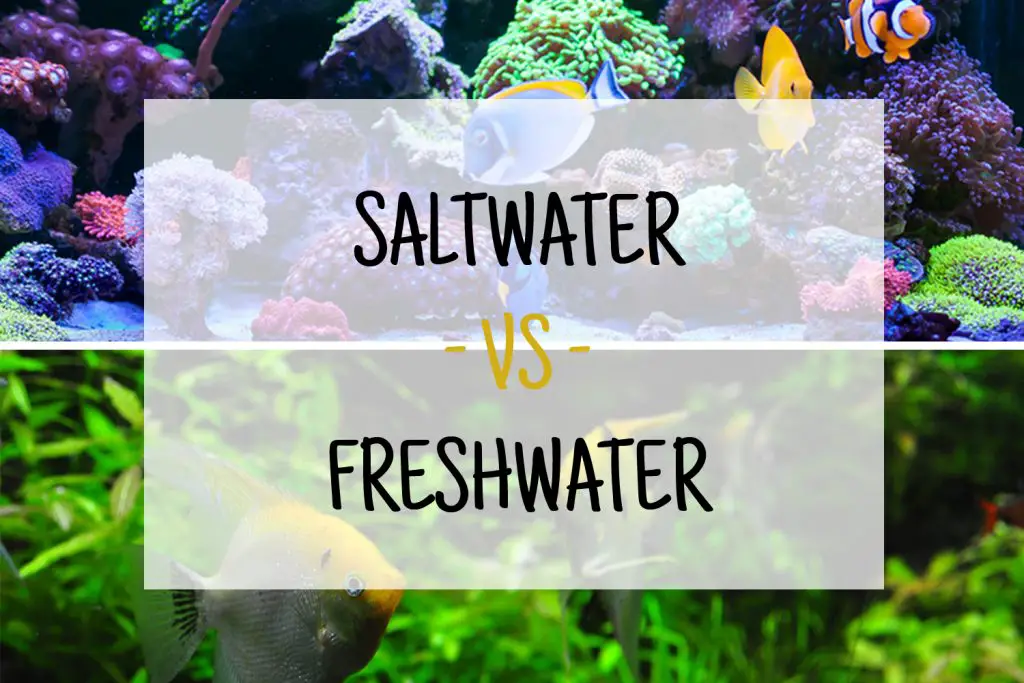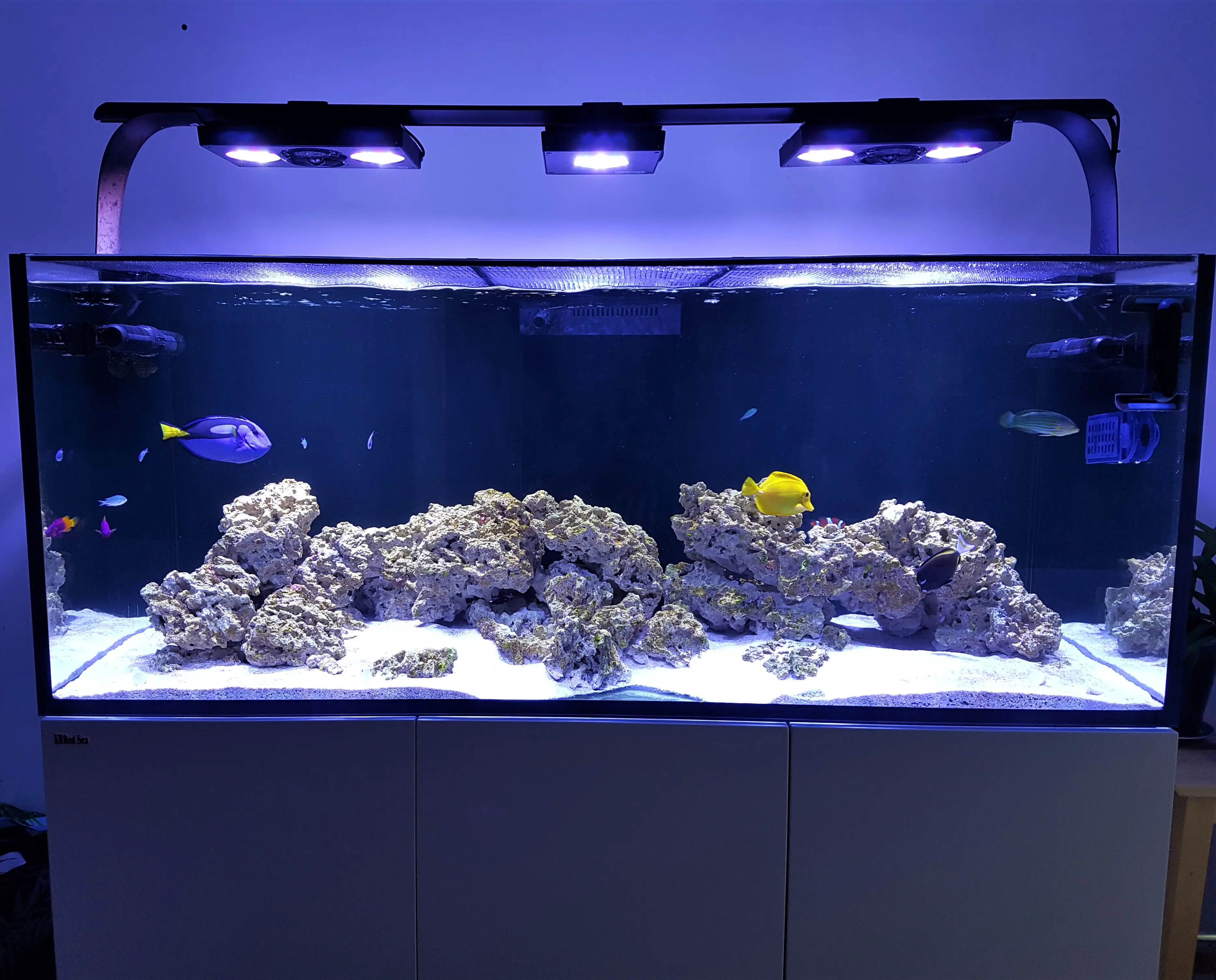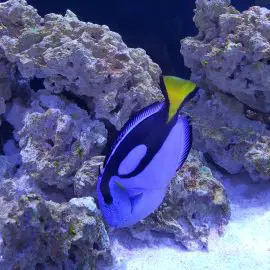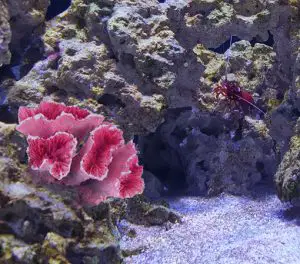Freshwater vs Saltwater Aquariums
What are the differences between freshwater and saltwater tanks?
Freshwater vs saltwater … I’m sure, like myself, that there are many of you out there who have started off with freshwater tanks and are now thinking of owning a reef aquarium. This article will discuss the main differences between the two.
Use the quick links below or scroll on for more information.
Quick Links:
Your Tank and it's Capability
Whether you are keeping freshwater or saltwater, you are essentially keeping water. There are however constraints which are dictated by the water volume and tank size. Take a look below as I discuss these in more detail.
Bioload
The word ‘bioload’ is bandied around often online, very often without a full explanation of what it is. Imagine a tank with nothing but pure water in it. Such an environment will have very little, if any, life in it. Now add a fish. In order to keep the fish alive, apart from maintaining ideal water parameters, you will need to feed it. That food will pass through the fish and has the potential to pollute the environment. Add more fish and you create more pollution. This pollution (or fish poo) is the bioload. Uneaten food also adds to the bioload.
The bioload created by fish is dealt with by good bacteria (nitrifying bacteria) in both freshwater and saltwater aquariums. Without the presence of these good bacteria breaking down the bioload, fish would very quickly poison themselves and die.
It is widely agreed that the bioload in a freshwater environment is far easier to maintain than a saltwater environment. Let’s consider a 4ft fish tank. A freshwater setup can take up to 70 slender bodied fish without unbalancing the bioload. Slender bodied fish such as tetras contribute very little to the bioload.
A saltwater tank of the same size is capable of maintaining 18 inches of fish. The reason the calculation is expressed in inches is because saltwater fish come in all shapes and sizes. The bottom line is, the less fish you keep, the healthier the system. If you imagined your 4ft freshwater tank brimming with saltwater fish, as is quite easily achieved in freshwater tanks, then realistically you either need to scale right down on what you had hoped to achieve, or invest in a much larger aquarium.
When bioload is exceeded, a saltwater tank will accumulate nitrate (because the tank is unable to maintain enough nitrifying bacteria). This increase can lead to nitrate toxicity and we start to see nuisance algae appear, and corals begin to suffer. In addition to this, it is important to research the longevity of saltwater fish. The adult size they will eventually grow to has a huge impact on determining whether or not they would be suitable for the aquarium.
For instance, if you have taken a fancy to a Regal Tang (Dori) in your local fish shop (lfs) which could be sold the size of a pound coin, you need to know that the absolute minimum tank size would be 5ft because they are strong swimmers and do grow very large.
Filtration
In a freshwater aquarium, the filter acts in two ways. Firstly, it acts as a mechanical means of filtration by forcing water through media (sponge, filter wool, bio balls and many other types of media) to catch detritus, to be removed at each water change. Secondly, it acts as biological filtration, to provide an environment where good bacteria can live. These bacteria help to break down the bioload in the aquarium (as discussed above).
In a saltwater aquarium, it’s important to know that given the chance for detritus to build up, the result will be a rapid rise in nitrates. Therefore, if an external filter is not used and maintained correctly it can become a detritus trap and a major contributor to high nitrate levels. For this reason mechanical filtration media is very rarely used in saltwater systems.
Those who do use external filters are more inclined to use live rock rubble, for additional biological filtration, and products designed to remove nitrates and phosphates, as well as activated carbon to polish the water. Some keepers do use filter wool in their external filter to polish the water, but the wool is changed out every 2 to 4 days depending on the system to ensure it does not become a ‘nitrate factory’.
So how are saltwater aquariums filtered in the absence of a filter?
The answer is live rock.
Live rock is essentially porous ocean rock capable of sustaining your tanks population of good bacteria. Water is continually filtered through the live rock, allowing the good bacteria to remove ammonia and nitrite from the system. Your sand will act in the same manner, once live (although you can buy live sand).
There are of course additional methods of filtration to remove phosphates, excessive nitrates and impurities from the water, but the basis of any saltwater tank filtration is live rock.
Lighting
Assuming that your existing setup includes freshwater lighting that will aid the growth of live plants, you may want to consider looking into lights that are more suited to the saltwater environment.
If your aim is to keep a fish only aquarium, then freshwater aquarium lights will have no adverse affects on the fish. However, as these lights are adept at providing the right type of lighting for live plants, they would naturally also be very good at providing the right type of light for algae growth, something you should be avoiding.
It could be a simple matter of replacing T8 fluorescent bulbs for saltwater specific T5 bulbs. More information on lighting can be found here.
There are a multitude of lights available for saltwater fish keeping, ranging from well priced to very expensive. The most common have been T5 fluorescent bulbs, but this top position has slowly been usurped by the advancement of LED lighting.
LED brands to consider are: Evergrow LED Lighting, LEDZeal Lighting, Maxspect Razor, TMC Luminair, Aquaray, Kessil, Echotech Radion and many more.
Once your lighting has been upgraded, you can be assured that whatever you decide to put into your tank will have the correct lighting requirement. You should also be aware that fluorescent lamps need to be changed annually at a minimum because they do degrade over time. This, again, can cause sudden algae growth.
Substrate
Do not consider using freshwater substrate in a saltwater tank. The sand used in saltwater tanks is essentially crushed coral. This is very porous and provides a substantial surface area for good bacteria to colonise. In addition, saltwater sand, such as this, has a naturally lower level of silicate to prevent outbreak of diatom, whereas other substrates are more likely to have higher levels of silicates.
Tank Ornaments
Although tank ornaments are generally accepted in the freshwater world, as they can add a striking backdrop or become the centre of focus, they are not as popular in saltwater tanks. This may be because the diversity in a saltwater system (such as coral and invertebrates) far outweighs the need for ornamentation, or because the need for sufficient live rock in the system leaves little space for anything else.
If you however have a FOWLR aquarium, Fish Only With Live Rock, then you may want to add splashes of colour to the rockwork by adding fake coral.
Air Pumps
An air pump and diffusers are used to move the water around and provide a certain amount of oxygenation in a freshwater tank. Air is not used in saltwater tanks for this purpose. Instead, saltwater tanks make use of wavemakers and powerheads to rapidly circulate the water and breaking the water surface to allow for gaseous exchange (transfer of nitrogen into the atmosphere and introduction of oxygen into the water).
Converting your freshwater tank to saltwater
Saltwater aquariums available commercially include one of two things: either a rear hidden filtration system on smaller systems, or a sump hidden behind cabinet doors. I have put emphasis on hidden to illustrate the leaning of the majority of saltwater aquarium keepers to hide the workings of the tank – essentially keeping the display free of clutter.
Should you decide to convert your tank from freshwater to saltwater, with an external filter, you will also need to add a skimmer to the system. This will either be internally visible in the display or hanging from the side of the tank. You will also need a heater and heaters (unless you have an in-line heater to the filter). If an uncluttered display is what you are looking for, then a saltwater tank is the way to go.
Of course, you do have the option of adding a sump, which increases overall water volume and provides an area to hide additional filtration devices such as a phosphate reactor, a UV steriliser and even a refugium … but that is an entirely new subject.









